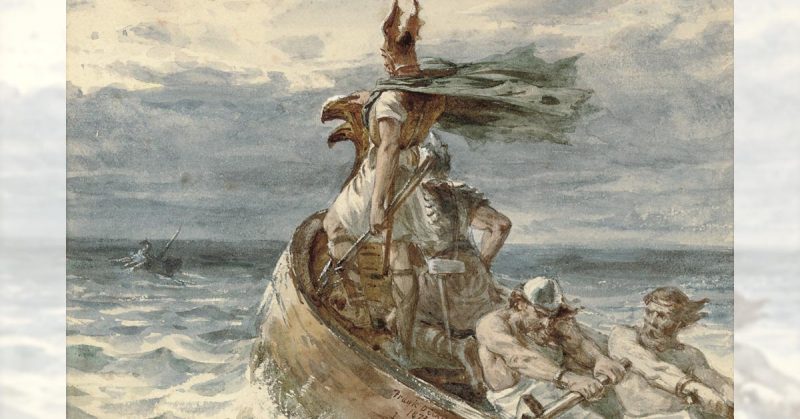When thinking about the Viking age it is nearly impossible not to picture the iconic Viking Longship complete with dragon head bow and shields hung over the sides. Viking ships and the raiding they were capable of dominated the lives of the Vikings, and their extreme focus and dedication allowed them to raid nearly every bit of Europe that was even remotely close to a sea or river.
Viking warriors had arms and armor comparable to many European powers and raided with forces that were often many times smaller than European armies, yet they had astounding success for centuries.
While it might be difficult to imagine the Romans as having an influence on the Viking age, they very well could have been the spark that enabled it. Historical sources are limited, but Scandinavian ships seemed to have lacked sails until they were influenced by Roman trading vessels that skirted along the coasts of Europe and into Scandinavia for centuries. The sail had been in use by Mediterranean powers for thousands of years, but the Scandinavians were content to travel the calmer seas with simple oared vessels.
The sail was a revelation for Scandinavian shipbuilding and enabled the Viking expansions. Scandinavians evolved along the coasts, though the sea was cold and harsh, it brought food and a means of transportation that was almost nonexistent through the frozen mountains of the inlands. Vikings left their homeland for a variety of reasons, from trading to settling farmland and quite often for raiding. Their vessels were of the highest importance and ships were built with extreme precision and dedication.
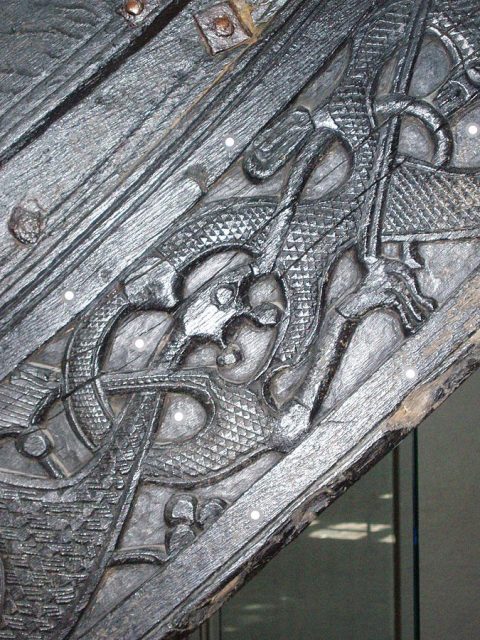
The standard Viking longship was built mainly with a clinker style of construction meaning that long planks of wood overlapped as they worked up the sides of the ship. Vikings used thin, but strong planks and made a special effort of finding the correct trees and worked the flow of the wood grain into the placing of the planks. The mast and keel, and any other key areas were often built of the stoutest oak. The prow of many of the ships were adorned with a carved dragon resulting in many of the raided areas calling them dragonships.
What may be the most impressive is that nearly all Viking shipbuilders worked from memory without schematics and built the ships from the keel up. The keel was one of the most important features of the Viking longships. It was very shallow to give the ships excellent maneuverability in water as shallow as three feet yet the base of the ship was wide enough to withstand the motion of the seas.
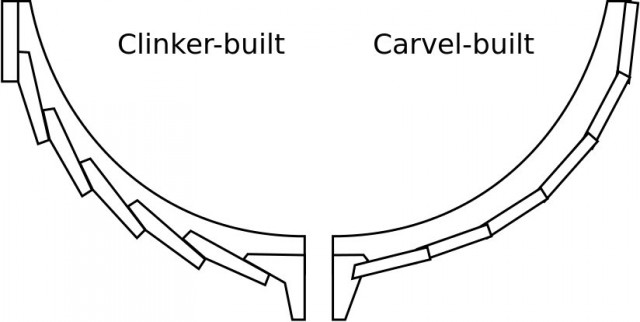
The keel that went to the bow of the ship was often reinforced to withstand the occasional icy waters and constant beaching. The symmetrical shape of the ships allowed them to move almost as well backwards when needed, giving extra mobility it tight areas such as rivers.
The light construction and shallow draft of the ships meant that they could often be easily carried overland to a nearby river. This meant that Vikings could gain access to waterways that led deep inland and connected to other bodies of water.
This is why the Vikings were able to raid all the way to the landlocked Caspian Sea. The ships were built to ride the waves rather than fight them, and the long construction was intended to be flexible rather than risk snapping the hull. Reconstructions have shown that typical Viking longships were remarkably flexible and bent quite far in response to the waves and currents.
When raiding the Vikings very rarely had to engage in amphibious warfare as the ships could cover 4-5 times the ground as any land army and thus many invaded areas simply could not react to a Viking raid in time. When raiding the Vikings fought with similar weapons and armor as most of the European powers, wearing heavy armor and non-horned helmets and fighting with long swords.
The Vikings also were skilled with axes and often used throwing axes and short bows especially in defensive engagements. Recent evidence suggests that raiding parties could include up to 50% women, shield-maidens who were no strangers to combat and the hard life of seafaring.
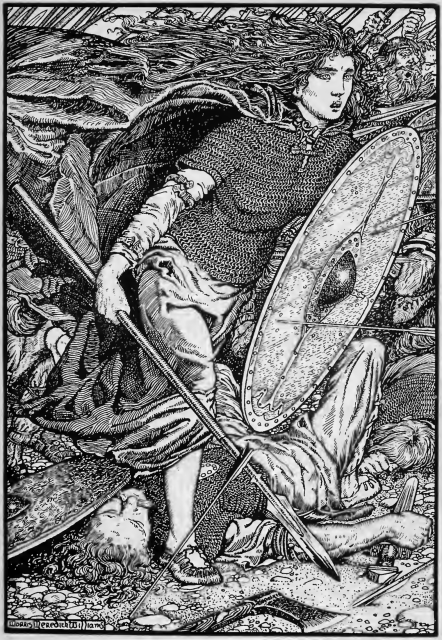
Vikings did engage in battle on occasion and forces meeting them often outnumbered them 2-3 to 1 yet the Vikings almost always prevailed. There are many reasons for this. The Vikings were a product of a harsh place.
Winter in Scandinavia was brutal and deadly, and seafaring in the region meant stale food and freezing ocean spray. Vikings often raided in winter as French and British winters were a breeze compared to what they grew up with. They were a tough people who often faced those accustomed to abundance.
Though sailing was difficult, it was often far less taxing than undergoing several miles of forced marching. When Vikings faced European armies, those armies were often just arriving after hustling to respond to a threat. On a more tactical level, the Vikings often employed a defensive shield wall and enticed enemy armies into charging, after wearing them down the Vikings would go on the offensive and break the enemy army with minimal effort.
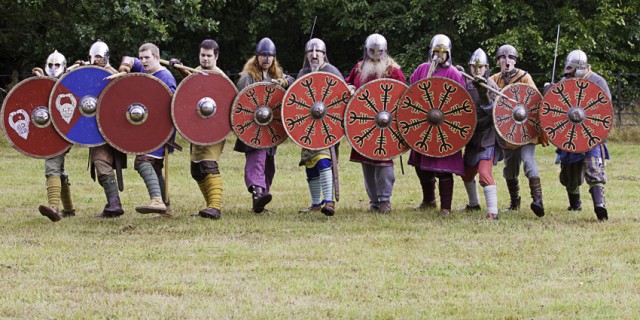
Lastly, the Vikings were born and bred into a culture built around raiding and expansion. Typical raids involved seasoned warriors just hoping to prove their courage in battle and earn a place in Valhalla. On the other hand, typical armies facing the Viking were composed of militia forces gathered to take care of the emergency and given limited training.
Even professional armies likely would not have had nearly as much shared combat experience as a typical Viking force. Experience was absolutely vital in close combat, and it is not surprising that the Vikings had such successful ventures.
Viking ships and the Viking’s skill in battle were largely products of their environment and they continued to dominate Northern Europe culminating in the settlement of Normandy and the Norman Conquest of England.
